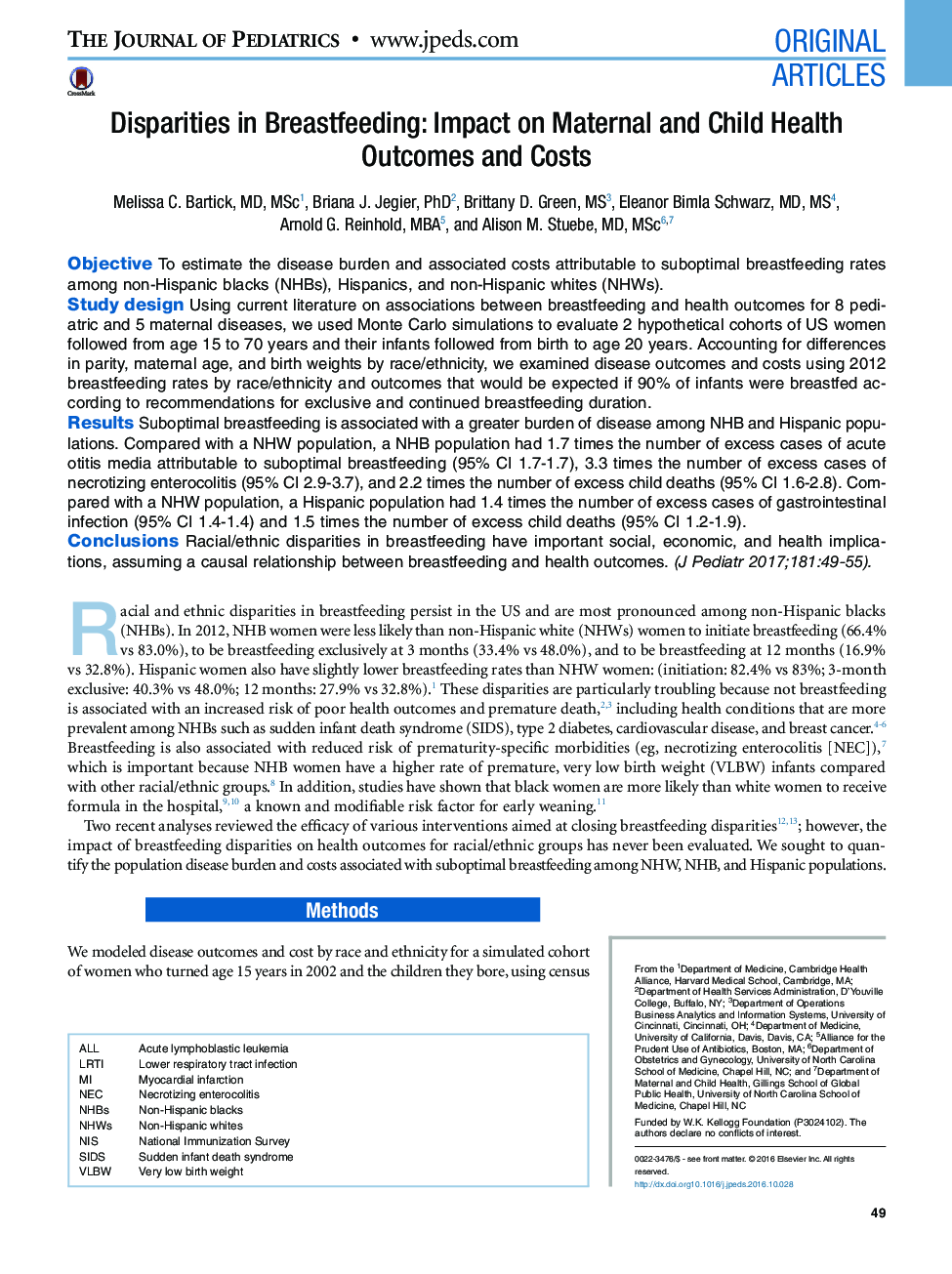| Article ID | Journal | Published Year | Pages | File Type |
|---|---|---|---|---|
| 5719185 | The Journal of Pediatrics | 2017 | 13 Pages |
ObjectiveTo estimate the disease burden and associated costs attributable to suboptimal breastfeeding rates among non-Hispanic blacks (NHBs), Hispanics, and non-Hispanic whites (NHWs).Study designUsing current literature on associations between breastfeeding and health outcomes for 8 pediatric and 5 maternal diseases, we used Monte Carlo simulations to evaluate 2 hypothetical cohorts of US women followed from age 15 to 70 years and their infants followed from birth to age 20 years. Accounting for differences in parity, maternal age, and birth weights by race/ethnicity, we examined disease outcomes and costs using 2012 breastfeeding rates by race/ethnicity and outcomes that would be expected if 90% of infants were breastfed according to recommendations for exclusive and continued breastfeeding duration.ResultsSuboptimal breastfeeding is associated with a greater burden of disease among NHB and Hispanic populations. Compared with a NHW population, a NHB population had 1.7 times the number of excess cases of acute otitis media attributable to suboptimal breastfeeding (95% CI 1.7-1.7), 3.3 times the number of excess cases of necrotizing enterocolitis (95% CI 2.9-3.7), and 2.2 times the number of excess child deaths (95% CI 1.6-2.8). Compared with a NHW population, a Hispanic population had 1.4 times the number of excess cases of gastrointestinal infection (95% CI 1.4-1.4) and 1.5 times the number of excess child deaths (95% CI 1.2-1.9).ConclusionsRacial/ethnic disparities in breastfeeding have important social, economic, and health implications, assuming a causal relationship between breastfeeding and health outcomes.
